Bhutan
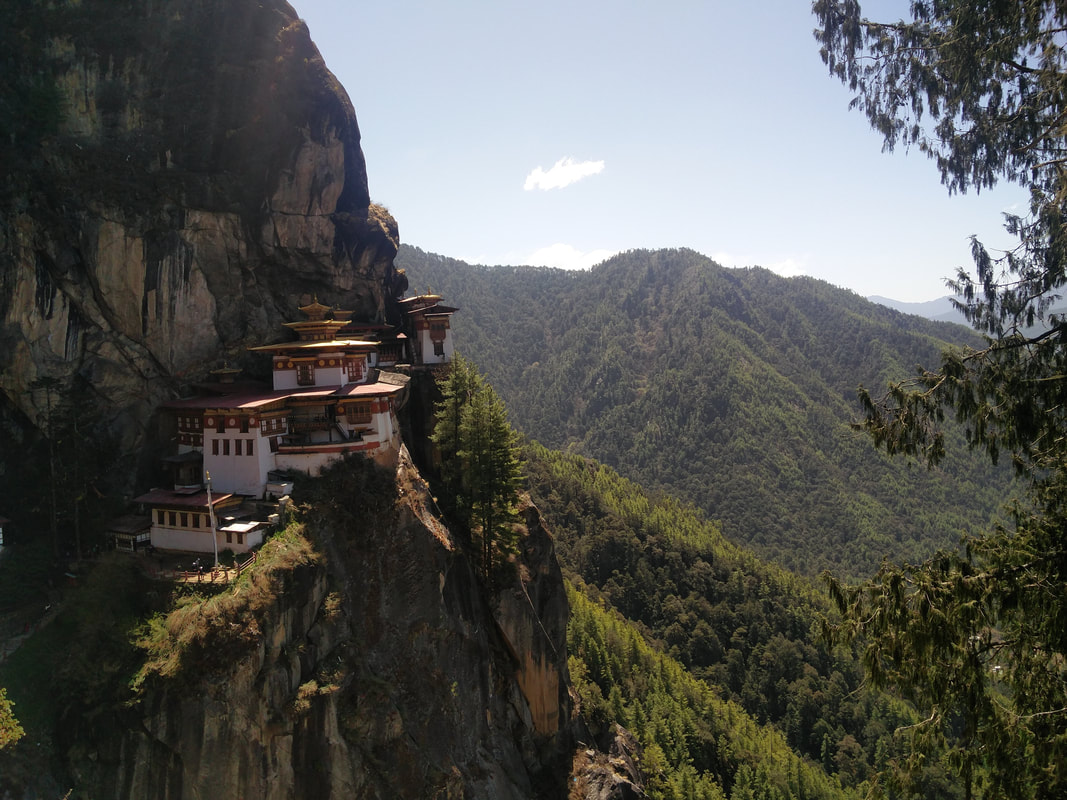
Cover: Tiger’s Nest Monastery
A tiny kingdom nestled deep within the high Himalayas, the “Land of the Thunder Dragon”, is a country where magic and myths are a part of history, where there are more monks than soldiers, and where happiness output is measured and considered more important than GDP.
Home to some of the best Himalayan hiking trails like the iconic Tiger’s Nest Monastery, stunning landscapes, legendary ancient monasteries and fortresses, and spicy yet delicious food, Bhutan is no ordinary place. At an altitude 8000 to 11000 ft, some people may need to acclimatize. It is a modern country, yet medieval with one foot still rooted in its past. If you wish to slow down, take a deep breath away from your fast paced city life and relish a moment or two in the lap of Himalayas! Visiting Bhutan in spring is ideal for hiking, enjoying the vistas and the pleasant temperatures.
See no pins? Please move map left-right-up-down until you see them. Zoom in and out for pins to separate. Use the Share icon on top right corner of the map to send it to your phone or email.
(A) Paro (B) Thimpu (C) Dochula Pass (D) Punakha
-
- Tidbits
- Highlights
- Customizing an itinerary
- Vegetarian/Vegan Food
- Narrative and pictures (A read of first-hand experiences)
- Free Subscribe
- Comments
Important
For any serious travel planning, to minimize scrolling and to appreciate its larger-than-life pictures, please view all blog pages on a laptop/large screen versus on the phone.
To see image titles: Depending on the device you are using, hover (on laptop) or hold down (on mobile).
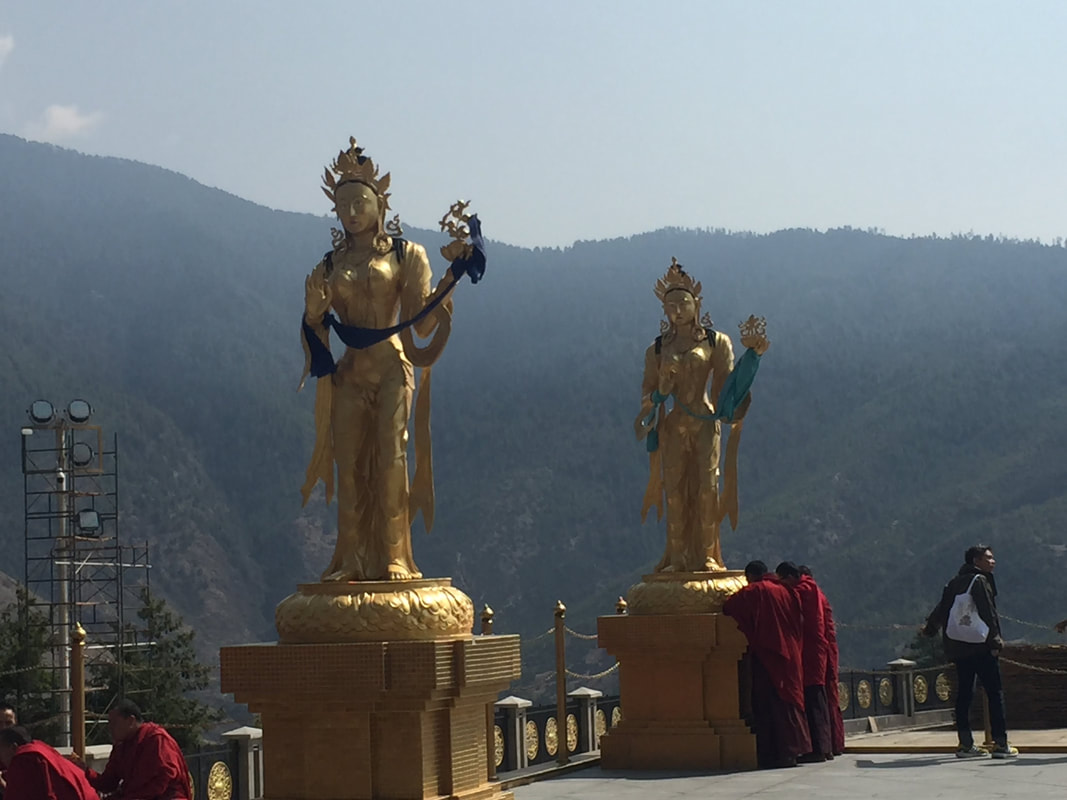
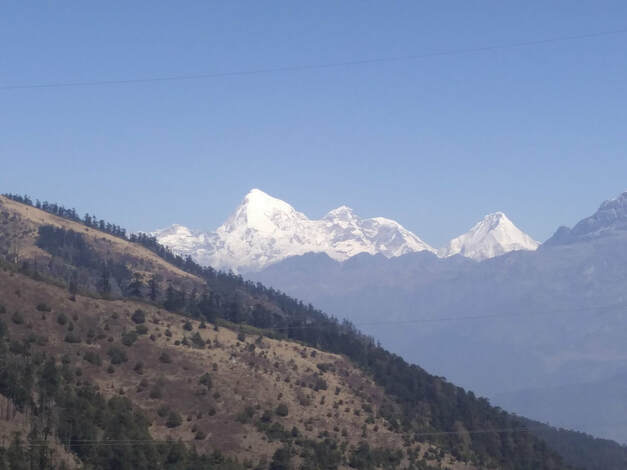
Tidbits
You will be travelling typically with a pre-booked guide.
Most common type of power outlet in Bhutan is Type D, H or G. The voltage used is 220-240V, and the frequency is 50Hz.
Currency is the Nu/Bhutanese Ngultrum. Cash is most commonly preferred to credit cards.
While Dzongkha is the national language, tourists can easily manage with English which is spoken and understood easily.
Pick when is the best season for you to visit Bhutan. Also, check what to pack for the weather, and how to dress when visiting any traditional places.
About the blog
Thanks to Sona Kasargod, Dallas, TX for contributing her writing and pictures to the Vegetarian food and Narrative sections which in turn enabled me to write the Highlights section. Also, thanks for additional pictures from Indira and Minoti Ramachandra, Bangalore, India, from their visit in 2017. Highlights section by Jyothi Shankar.
Preparing for Bhutan
All US citizens must have a visa to travel to Bhutan, and the visa is required in order to purchase a plane ticket to this destination. Foreign tourists must use a licensed Bhutanese tour operator or one of their international partners to pre-arrange their visa and book their holiday. A daily fee is also charged for every day of stay. For most foreign tourists, it amounts to $250 a day per person during tourist high season, and $200 a day for low season. This is to help protect Bhutan’s culture and environment.
Home | Tourism Council of Bhutan
https://www.bhutantravelbureau.com/about-bhut
https://followalice.com/knowledge/how-much-does-it-cost-to-travel-to-bhutan
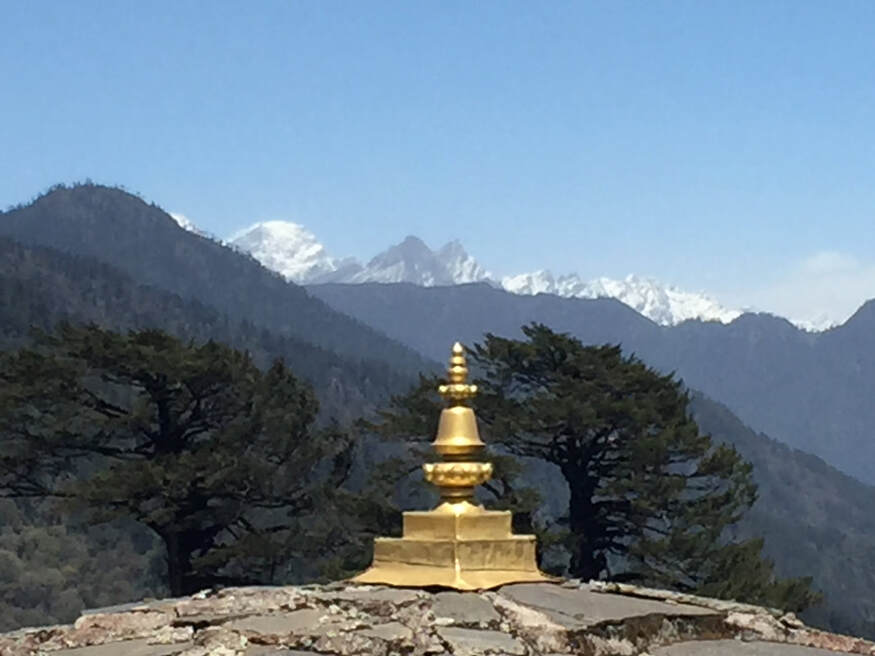
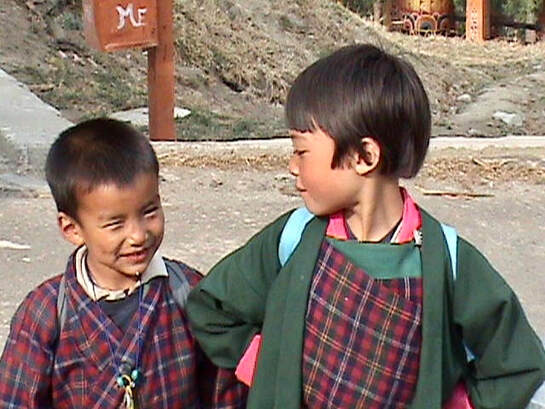
Bhutan Highlights
The below section suggests activities for about 1 week in Bhutan.
Paro
-
- Paro Taktsang (Tiger’s Nest): This iconic monastery is one of Bhutan’s most famous landmarks. It is perched precariously on a cliffside, offering breathtaking views of the surrounding valley. The hike to Tiger’s Nest is a memorable experience for visitors. A good resource is https://followalice.com/knowledge/all-you-need-to-know-to-hike-to-tigers-nest
- Ta Dzong, re-established as the National Museum holds a fascinating collections of art and religious Thangka paintings.
- Drugyel Dzong, the fort of the Drukpa victory over Tibetan invaders, about 9 miles from Paro.
- Paro Rinpung Dzong, an impressive architectural marvel that overlooks the Paro Valley.
- Kyichu Lhakhang is one of the oldest and most sacred temples in Bhutan, built in the 7th century. The temple is known for its tranquility and historical significance.
For avid hikers
-
- Chomolhari/Jhomolhari mountain along the border of China, Tibet and Bhutan. Majestic to see, its called the ‘bride of Kanchenjunga’ is 50 kms from Paro! https://www.mountainiq.com/guides/trekking-in-bhutan/routes/chomolhari-trek/
Thimphu
-
- Tashichho Dzong is a fortress serves as the seat of Bhutan’s government and the King’s administrative offices. It also houses several important religious relics and is a prominent landmark in Thimphu.
- National Memorial Chorten is an iconic Tibetan-style stupa is a popular place of worship and meditation for locals. It is dedicated to the third king of Bhutan and attracts devotees throughout the day.
- Simply Bhutan Museum gives you a glimpse into Bhutanese culture and tradition. It showcases traditional Bhutanese artifacts, offers hands-on experiences, and hosts cultural performances.
- Dochula Pass is at 10,500 ft and is a beautiful drive. Druk Wangyal Chortens are located here.
Punakha
-
- Punakha Dzong, the second oldest and second-largest dzong in Bhutan, is situated at the confluence of two rivers and is famous for its beautiful architecture and intricate woodwork.
- Chimi Lhakhang, the “Temple of Fertility,” is dedicated to a famous Buddhist saint, Drukpa Kunley and is a popular pilgrimage site.
- Punakha Suspension Bridge is one of the longest suspension bridges in Bhutan and offers stunning views of the Punakha Valley.
Customizing an itinerary
While some of you might use the information in the Highlights section to create your own itinerary, some others will prefer to have it prepared for them.
No time or inclination to delve into detailed vacation-planning? No worries!
I will curate and customize a trip for you, based on your interests and needs. You will receive a well-planned day-by-day itinerary and travel advice. Visit Services & About for more details.
Vegetarian Food in Bhutan
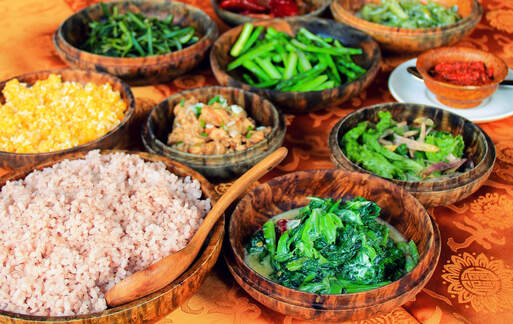
Photo credit: Roderick Eime / Flickr
To enjoy the local food in Bhutan, one has to be rather adventurous. The restaurants are either very rudimentary shacks serving local village fares or the fancy restaurants attached to large hotels in the cities like Thimphu. We did not find any mid-range restaurants. Most vegetables in large restaurants are imported. Some of them serve delicious foods of a variety suited to the Western palate. However, in order to truly experience the local culture, the small shacks with tiled roofs and wooden carvings, built with piled up stone walls and white-washed from the outside, are the only option. If you are not a lover of spicy food, make certain that it is prepared with very little spice. Food here is prepared fresh after you arrive, so be prepared for a long wait. In Bhutan, one can find Indian, Chinese, Nepali and Tibetan food. But when in Bhutan, try Bhutanese food. Red and green chilis are common in foods, as you will soon realize.
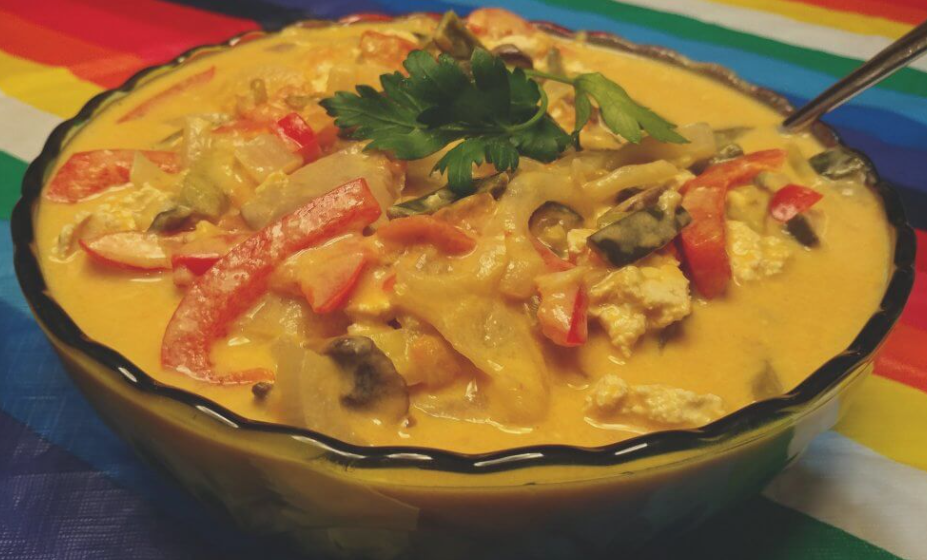
Ema Datshi. Photo credit: Yochi’sdinnerparty.com
- Ema Datshi: Ema Datshi is the signature dish of Bhutan. There is a popular saying that if you have been to Bhutan and not tasted Ema Datshi then you have not experienced Bhutan at all. In Dzongkha (local language of Bhutan), ‘Ema’ means (red) chili-peppers and ‘Datshi’ means Cheese. As the name suggests, it is a dish prepared with chilli and cheese. This makes it quite hot and spicy. In Bhutan, chilies are not just used as a seasoning but as vegetables.
- Kewa Datshi: ‘Kewa’ means Potato. Kewa Datshi is a preparation made with potato, cheese and chilli. However, unlike Ema Datshi, Kewa Datshi is less spicy.
- Khuli: Khuli is the local name for Buckwheat Pancakes. Buckwheat is grown in those parts of Bhutan where rice can’t be grown.
- Doma: Doma is an areca nut (betel nut) wrapped in a betel leaf with a dash of lime, consumed after meals as a digestif.
- Po Cha or Suja: Suja is butter tea, which is prepared by boiling tea leaves in water and yak or cow butter is then churned into the black tea. Butter makes the consistency thick and gives it a soup like taste. In a Bhutanese household, Suja is served with puffed rice or millets.
- Jaju: Jaju is dried Algae(river weed) Soup. It tastes and looks like butter milk.
- Eue Chum or Red Rice: Red Rice is a variant of brown rice but has a nutty taste. It’s a semi-milled rice. Hence, it takes lesser time to cook than the unmilled brown rice. After cooking process, it becomes soft and a little sticky. This rice is savored with curries like Ema Datshi.
- Ezze: Ezze is a hot sauce made up of roasted and minced red chilies, onion and tomatoes.
- Crispy Fried Turnip Leaves: Turnip is a root vegetable quite commonly used in Bhutanese cooking.
- Butter cheese curry: This is a curry prepared out of cheese, which is eaten with sticky rice.
(List courtesy: Neha Sharma, www.tripoto.com)
Go to the page on global vegetarian cuisines, you are interested to know more about food from different countries that have made it mainstream.
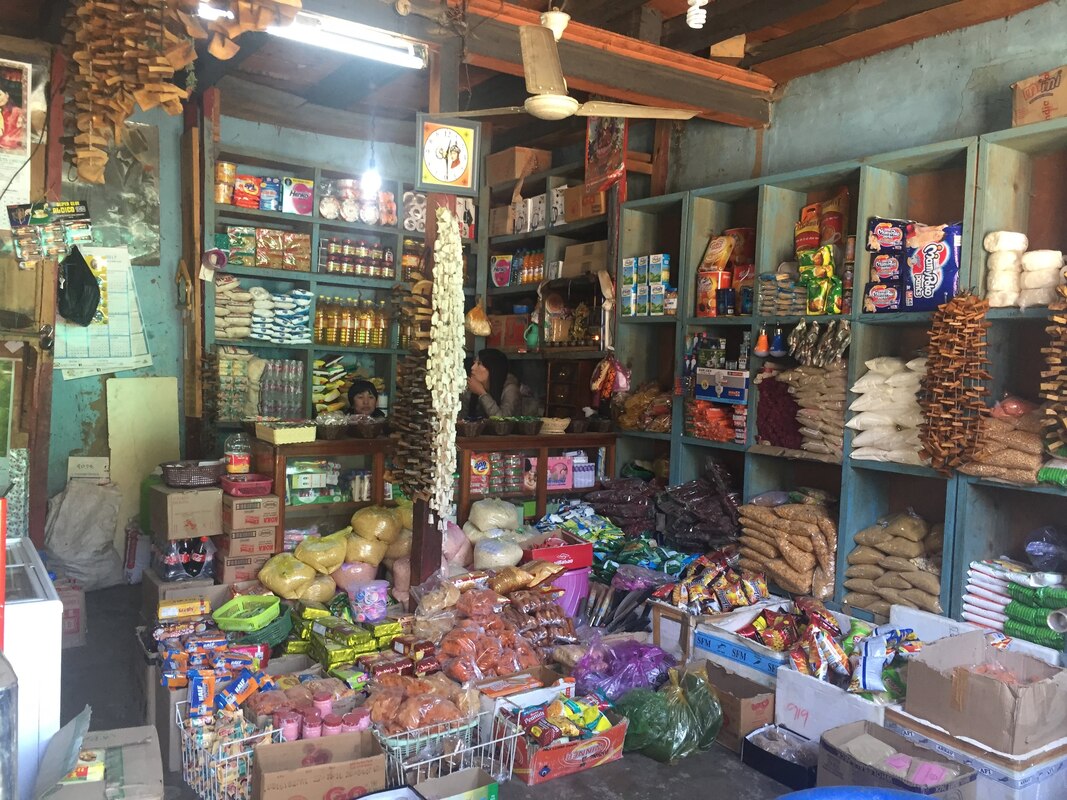
A store selling condiments items needed for cooking, cleaning etc
Narrative and Pictures
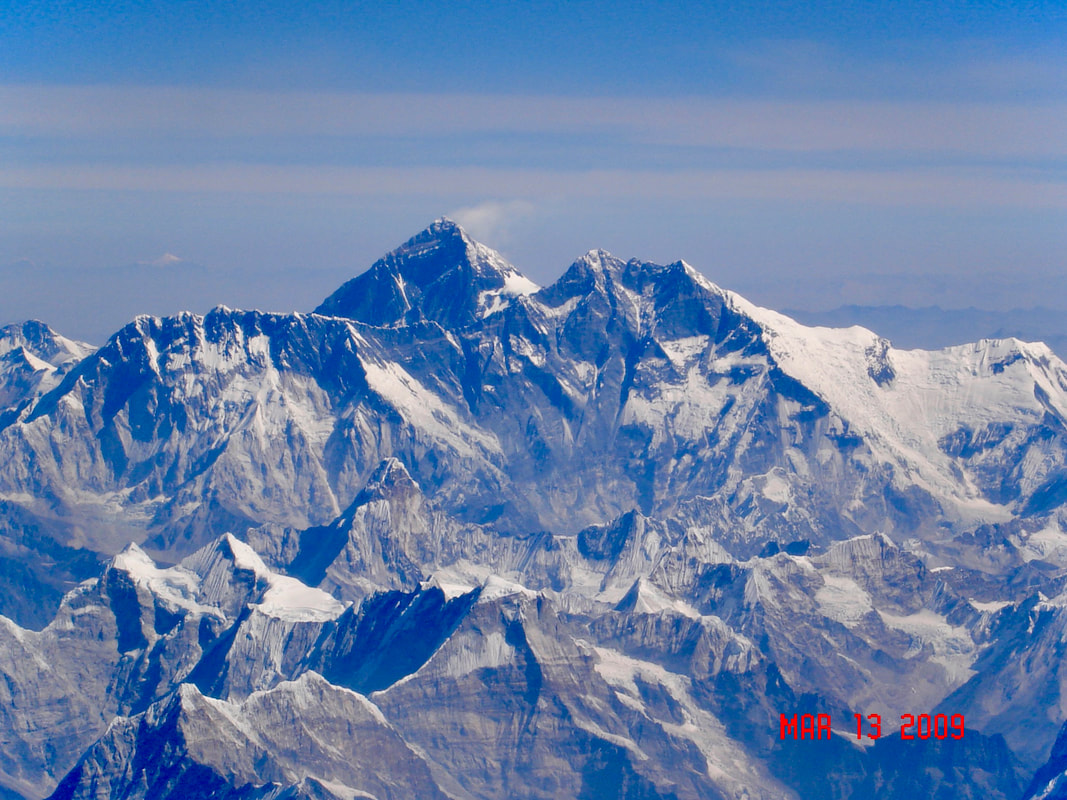
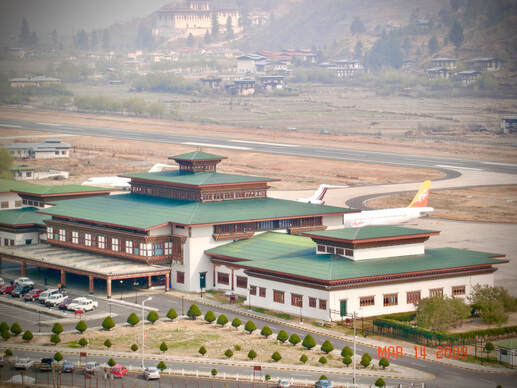
Getting There
Paro is the main airport and the gateway to Bhutan for most tourists. One can get to Paro from Delhi or from a few other cities in India. There is even a direct flight from Thailand, thanks to the Buddhist connection between the two countries.
The flight from Delhi to Paro is one of the most spectacular mountain flights we have taken. We had the fortune of a clear day and could see Mt. Everest and other Himalayan peaks. The green walls of forested mountainsides known as ‘the doors’, surround the landing strip that passes for a runway. To the north, the great snowcapped peaks of the Himalayas seemed to rise and touch the sky! As our flight approaches Paro, the Druk Air airplane banks and weaves its way through the tall steep mountains, appearing dangerously close to the cliffs while losing altitude, before making a visual landing at one of the top 5 most dangerous airports in the world. But the beauty of the surrounding hills dotted with quaint, white-washed houses with traditional colorful roofs makes one forget all fear. As we taxi to a halt alongside what looks like a monastery, one realizes it is actually the airport terminal.
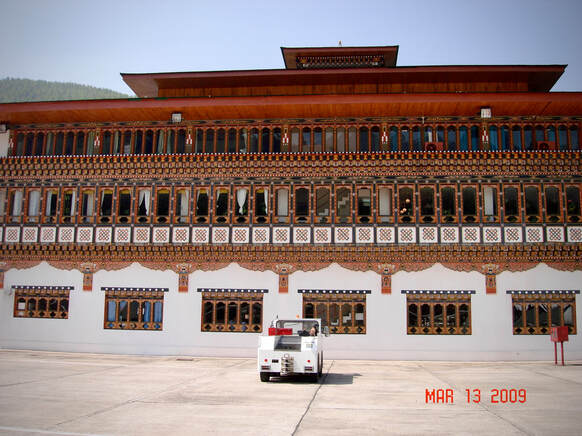
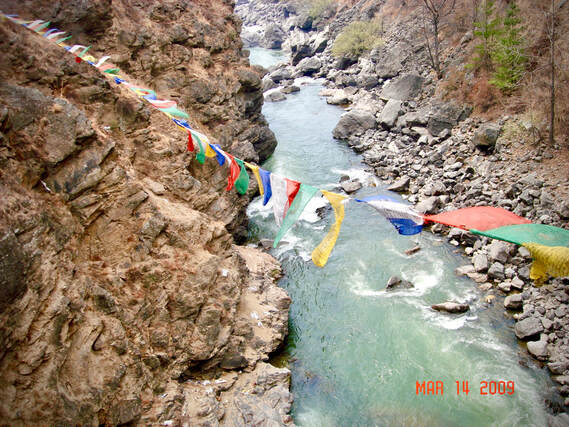
The Colorful Prayer Flags
It was an ethereal sight to see these wind flags fluttering over a pristine rivulet down below . The flags have prayers written on them – often with sketches of Buddha or a flying horse and are hung to bring good fortune by spreading the prayers as long as they fly.
Our reading had told us that each of the primary colors signifies an element or force of nature – Blue for sky, red for fire, white for wind, green for water , yellow for earth or royalty. The Vertical flags are different- they are put to remember the dead & bring peace after death – to ward off evil spirits.
We commonly also came across rows of prayer wheels at monasteries and temples that were being turned around by both locals and tourists as part of accumulating wisdom and merit in their lives.
Paro
All of Bhutan is dotted with beautiful Dzongs or fortified monasteries with their distinctive carved and colorfully painted wooden roofs in the traditional style. Paro was no exception. One of the first sights we visited was the Ta Dzong, which was built in 1651 as a watch tower. Since 1951, Ta Dzong has been re-established as the National Museum and holds fascinating collections of art and religious Thangka paintings.
Another Dzong that was worth seeing is the Drugyel Dzong, the fort of the Drukpa victory over Tibetan invaders, about 9 miles from Paro.
Kyichu Lhakhang is an ancient Buddhist temple believed to be built by a king in the year 659. It is believed that it holds down the left foot of an ogress so large that it covers Bhutan and most of eastern Tibet. We felt a sense of peace and tranquility in these temples that we visited.
A hike to Chomalgiri may be in order if you are a hiker as was mentioned in the highlights section with the link.
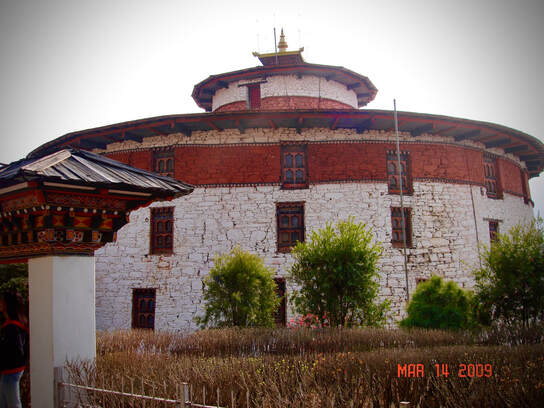

Tiger’s Nest
Most travelers recognize the iconic “Tiger’s Nest” or Paro Taktsang which is a Buddhist monastery perched high in the hills about 10 miles from Paro, which presents the most scenic views of the Paro valley. Even Guru Rimpoche – the ancient hermit who is supposed to have founded Bhutan – arrived here on a flying tiger!
It has to be a photographer’s delight as well as hiker’s delight. The only way to access this monastery is to hike up along the steep path alongside seemingly inaccessible cliffsides.
https://followalice.com/knowledge/all-you-need-to-know-to-hike-to-tigers-nest
Thimphu
About 2 hours drive from Paro is the main city of Thimphu, the capital of Bhutan. The road to Thimphu runs through Chuzom at the confluence of Paro and Thimphu rivers. There we see the three chortens or stupas. The three structures represent three types of Buddhist architectures – Nepalese, Tibetan and Bhutanese. Crossing the fast-flowing rivers spanned by a series of colorful prayer flags on ropes, we drive another 20 miles to reach Thimphu.
Thimphu hardly seems like a city, let alone the capital city. But this is the first and perhaps the only city with concrete buildings, although a lot of care has been taken to preserve the traditional architecture. The city used to contain the country’s only traffic light, now enshrined in a chorten because it was found to be too modern and disruptive to the city’s languid traffic and even-paced lifestyle of its populace.
The National Memorial Chorten is a key attraction in Thimphu, built in 1974 by the queen in memory of her late son, the third Druk Gyalpo, King Jigme Dorji Wangchuk, considered the Father of Modern Bhutan. It was originally his brainchild, to be constructed as a monument to world peace and prosperity, but only completed after his untimely death. The large courtyard also serves as an evening gathering place for Thimphu’s residents – not many pubs or movies here – who offer their prayers (often with rotating beads in their hands) and exchange gossip. The prayer wheels in monasteries and prayer beads in the hands of the traditionally dressed people are universal, irrespective of wealth or social status.
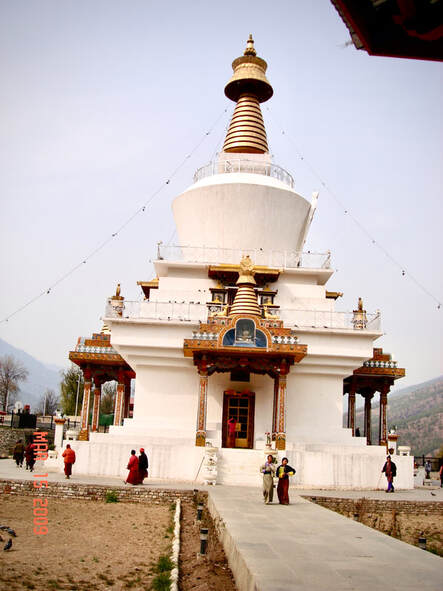
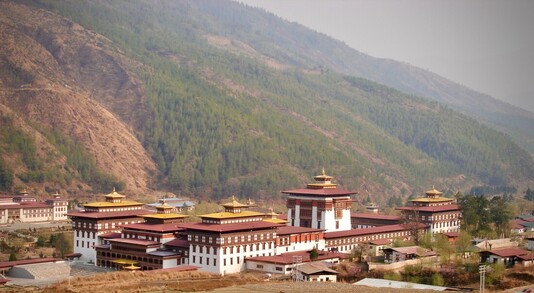
Tashichho Dzong or “The Fortress of the Glorious Religion” is the center of both the Government and Religion. This splendid dzong, north of the city on the west bank of the Wang Chhu, dominates the valley, looking out over a cascade of terraced fields. It’s Thimphu’s grandest building by far. In Bhutan, the King and the Buddhist Religious Head are considered as equal rulers with clear division of responsibilities. Although now a parliamentary democracy, Bhutan’s royalty still holds sway in all political and administrative matters. The fortress was reconstructed in the 1960s in a traditional Bhutanese style without nails or architectural plans.
Thimphu is also home to several art schools and museums worth visiting. The Takin Zoo houses the national animal – the Takin – that is only found in Bhutan.
Punakha
We are next driven to Punakha, the administrative center of Punakha dzongkhag, one of the 20 districts in Bhutan. It is about 3 hours from Thimphu. It is known for its warm weather throughout the year.
The road from Thimphu to Punakha passes through Dochu La Pass at 10,500 ft. (45minutes drive from Thimphu), site of one of Bhutan’s most enchanting views. If weather permits, from this pass, the breathtaking peaks of Bhutan’s Northern border can be viewed during season. We get to see a magnificent canvas of color- a profusion red, pink, white, yellow and purple rhododendron blossoms and white magnolias. A herd of yaks graze in the stream bed where the road curves. Dochu La is where a queen has built 108 stupas.
Punakha Dzong, with an entrance through an intricately carved wooden covered bridge, is the most beautiful dzong in the country. Especially since it is spring, the lilac-coloured jacaranda trees bring a lush sensuality to the dzong’s towering whitewashed walls. We are told that this dzong was the second to be built in Bhutan and it served as the capital and seat of government until the mid-1950s. All of Bhutan’s kings have been crowned here. The dzong is still the winter residence of the dratshang (official monk body).
Below is a pictures of my daughter with the Drangyen, or Bhutanese lute, is the oldest and most famous instrument from Bhutan. With its distinctive chusin shaped head (a sea monster designed to scare away any evil spirits attracted to its beautiful music), meticulously hand-carved body, and haunting, softly melodious sound, the drangyen embodies the unique musical tradition of Bhutan. Literally, its name means “hear the melody” (dra means “melody” and ngyen means “listen”).
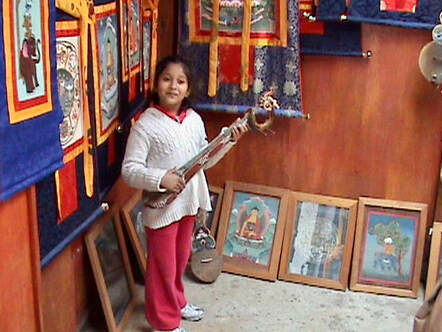
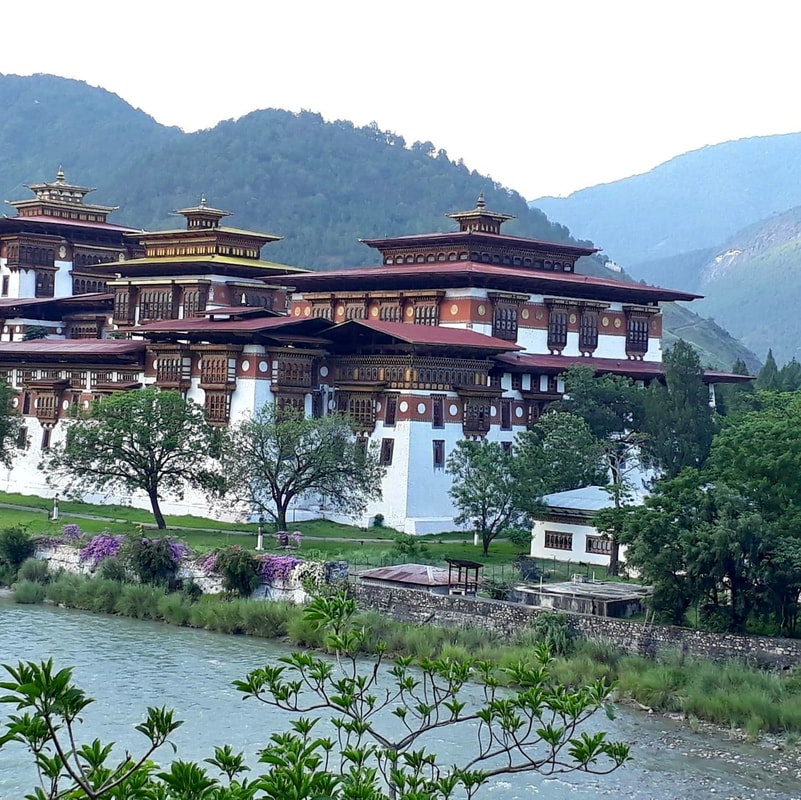
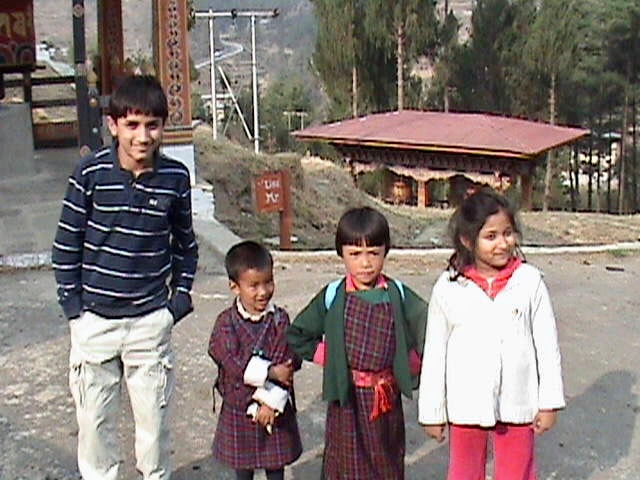
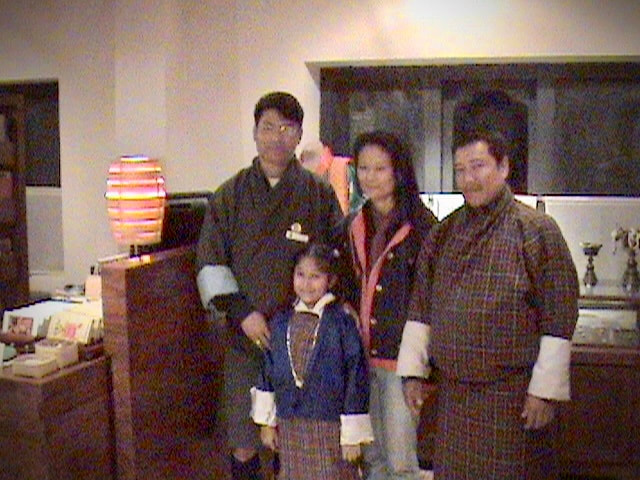
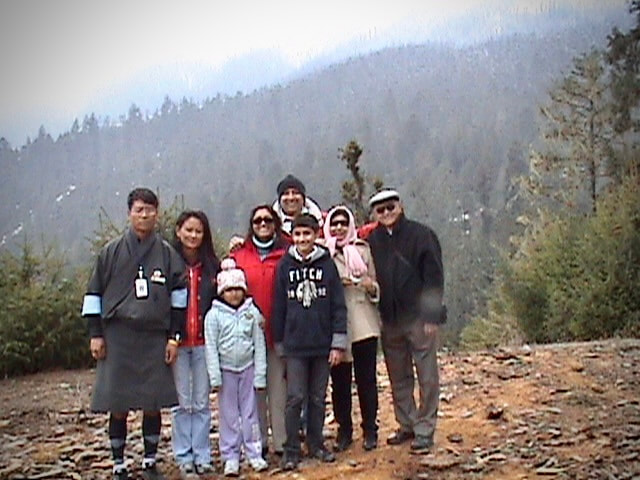
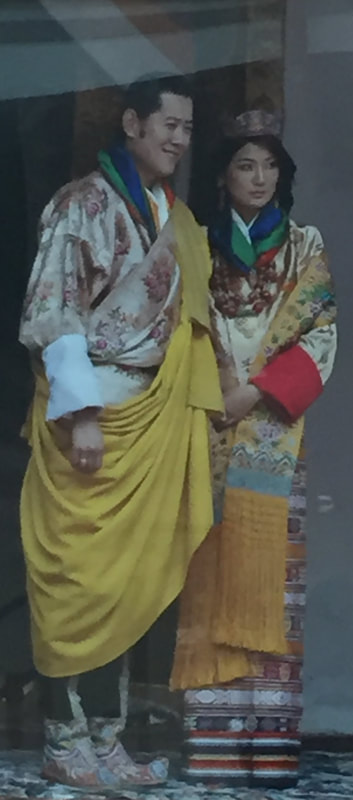
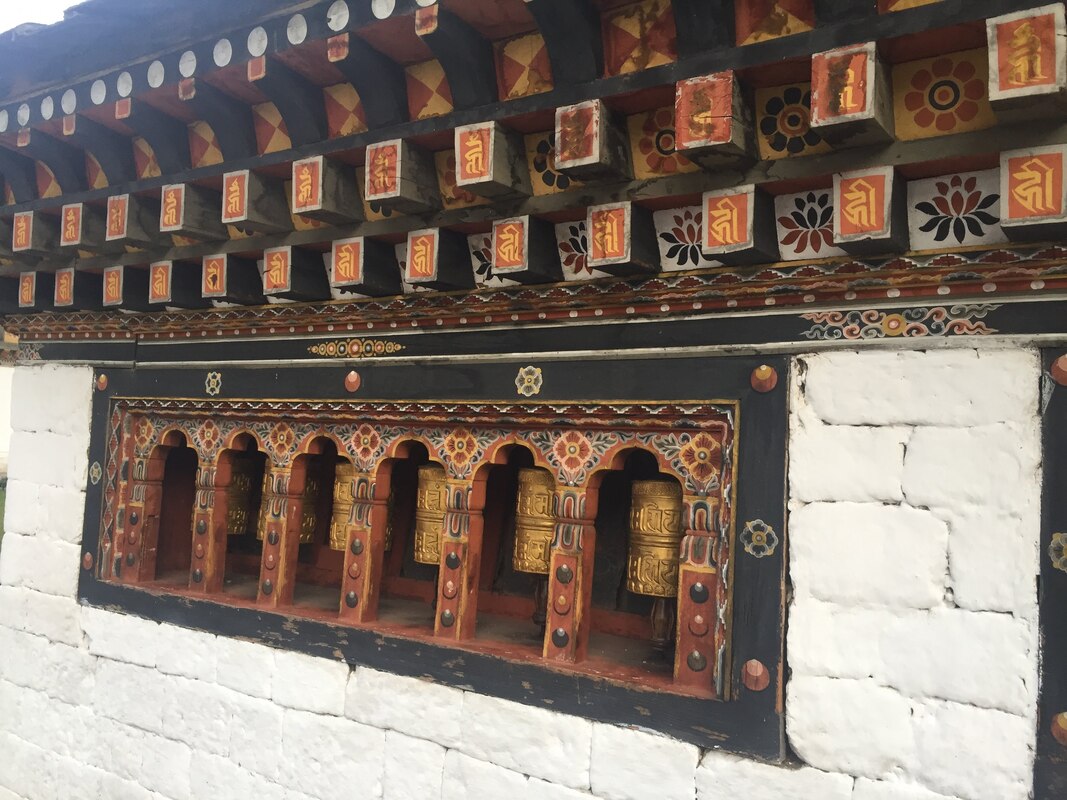
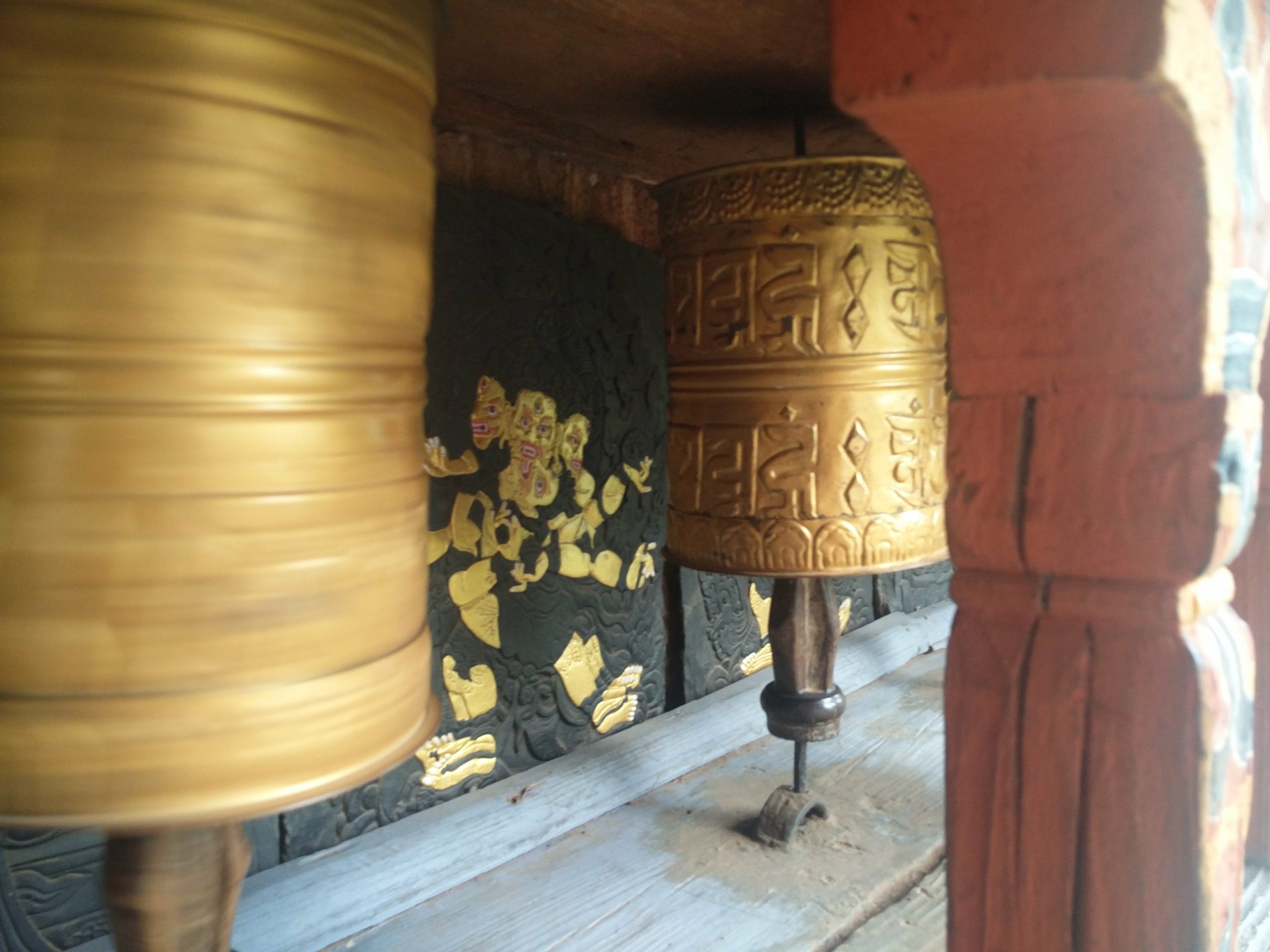
Free Subscribe
If you have liked this webpage, here is a request from me to support the hard work! Thanks, it’s much appreciated!
- Leave a comment on this page (scroll down), share your own experiences if you have already been to this place.
- Subscribe to travelstosavour and receive 2 free blog posts per month, featuring 2 new destinations (scroll down to the footer to subscribe).
- Follow travelstosavour on social media – Facebook, Instagram and Youtube (by a click of the button in the footer) and share all the goodies with your pals!
- Visit Services & About, if you need a customized itinerary and travel advice.
Check out other destinations and nature escapes on this site.


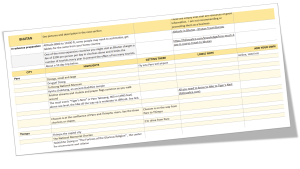
Beautifully Documented, Jo !! Bhutan is truly worth visiting even though to us, US citizens it may seem exhorbidant, believe me, you’ve never seen nor experienced a place that steeped rich in culture , nature like you’ve seen . Bhutan will truly take your breath away!
Thanks Sona! Much appreciate your contribution to it too.